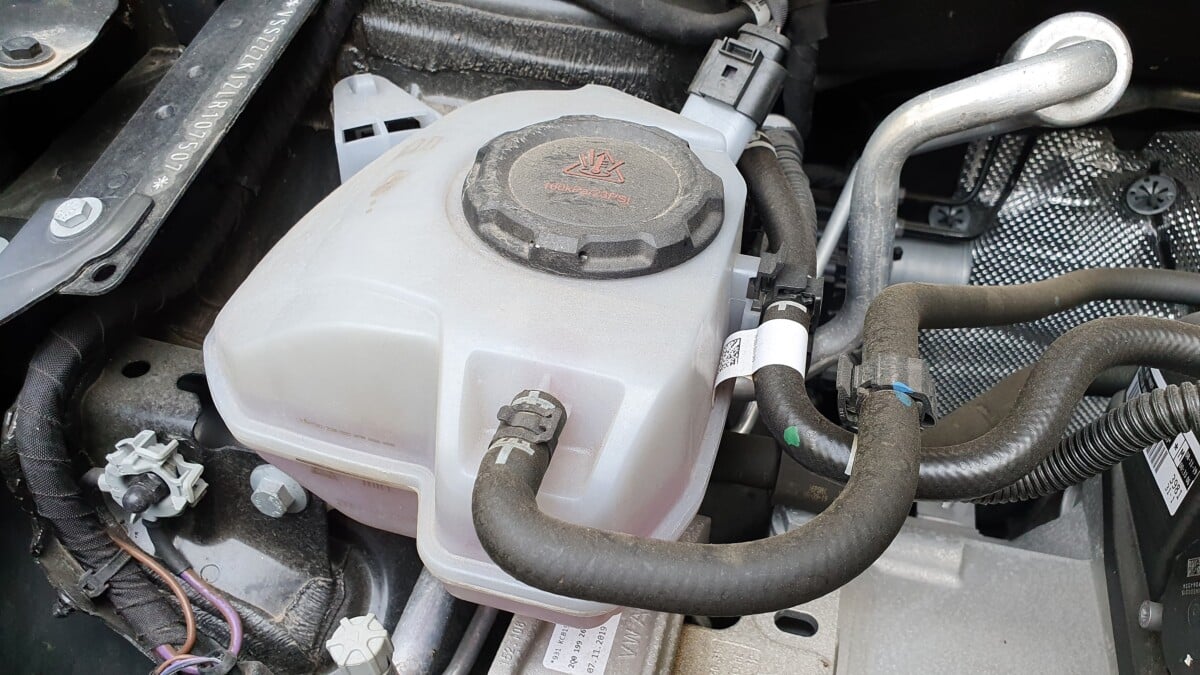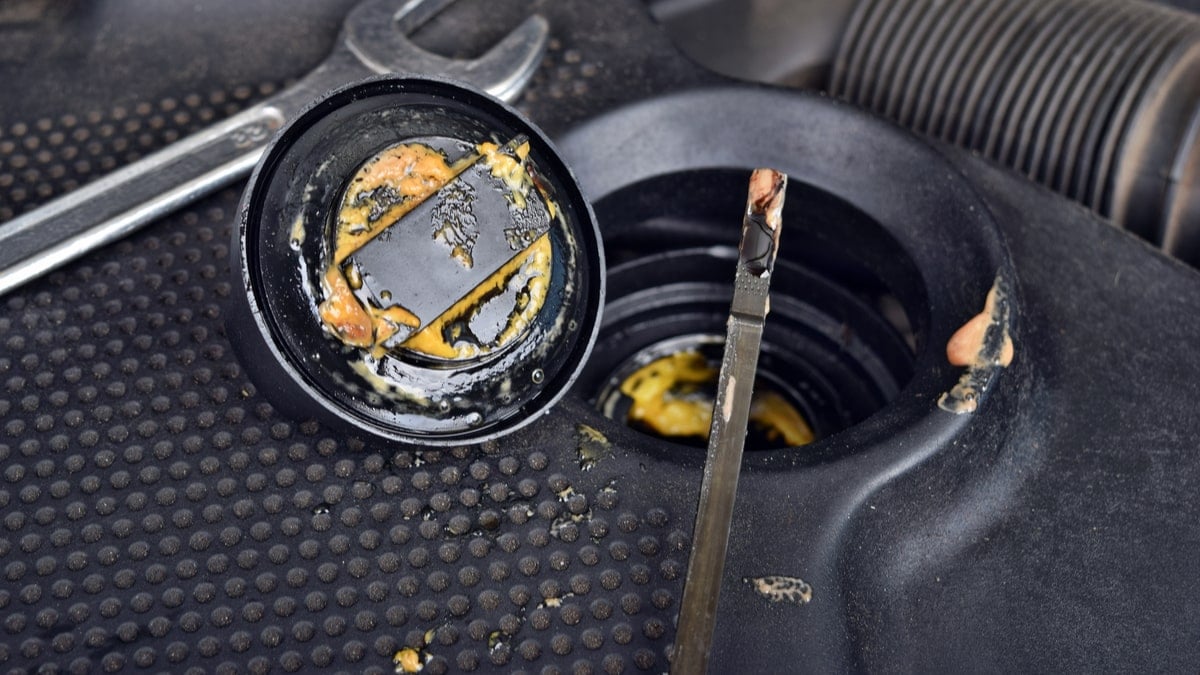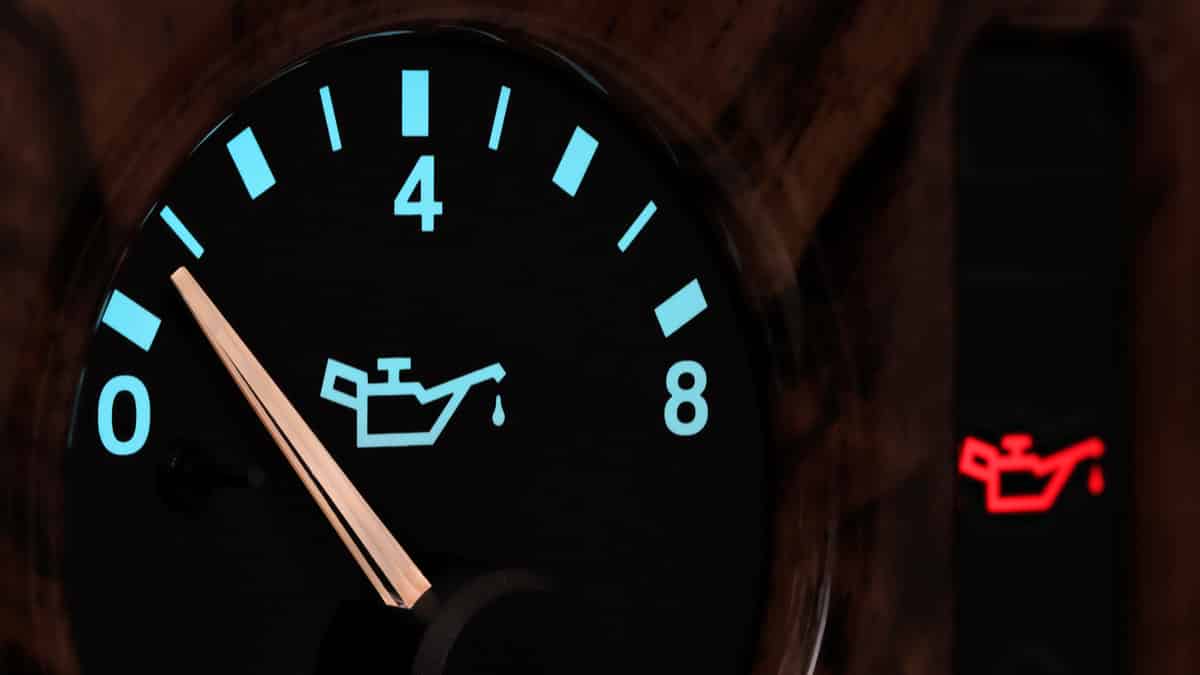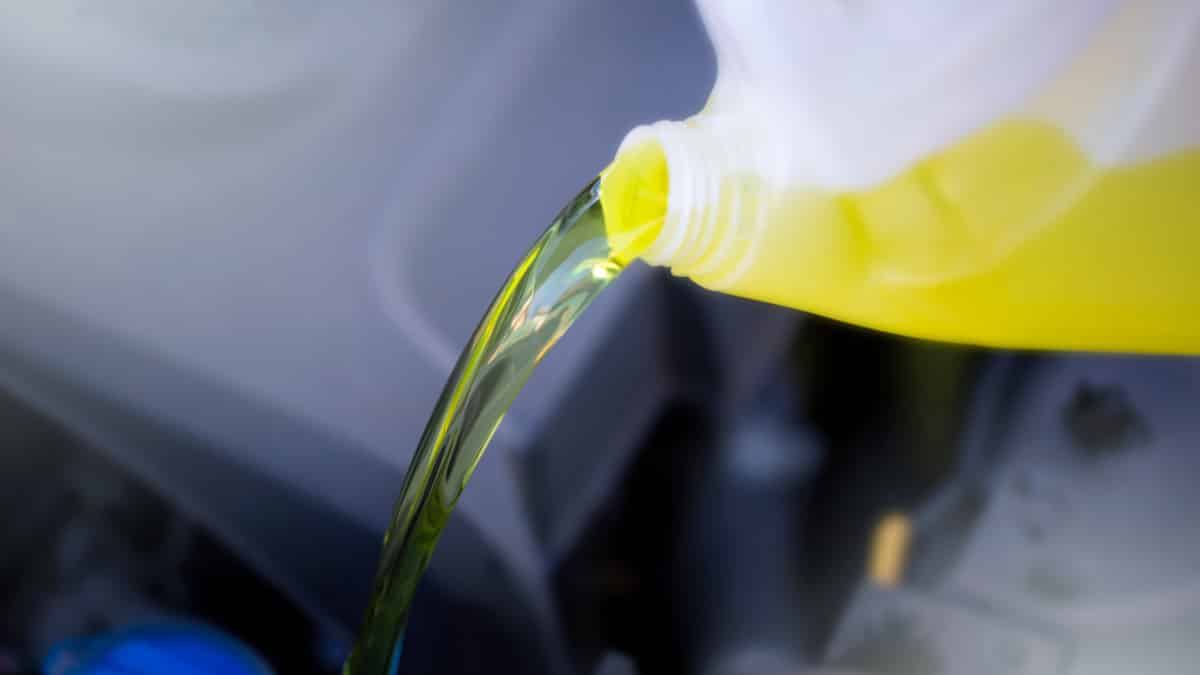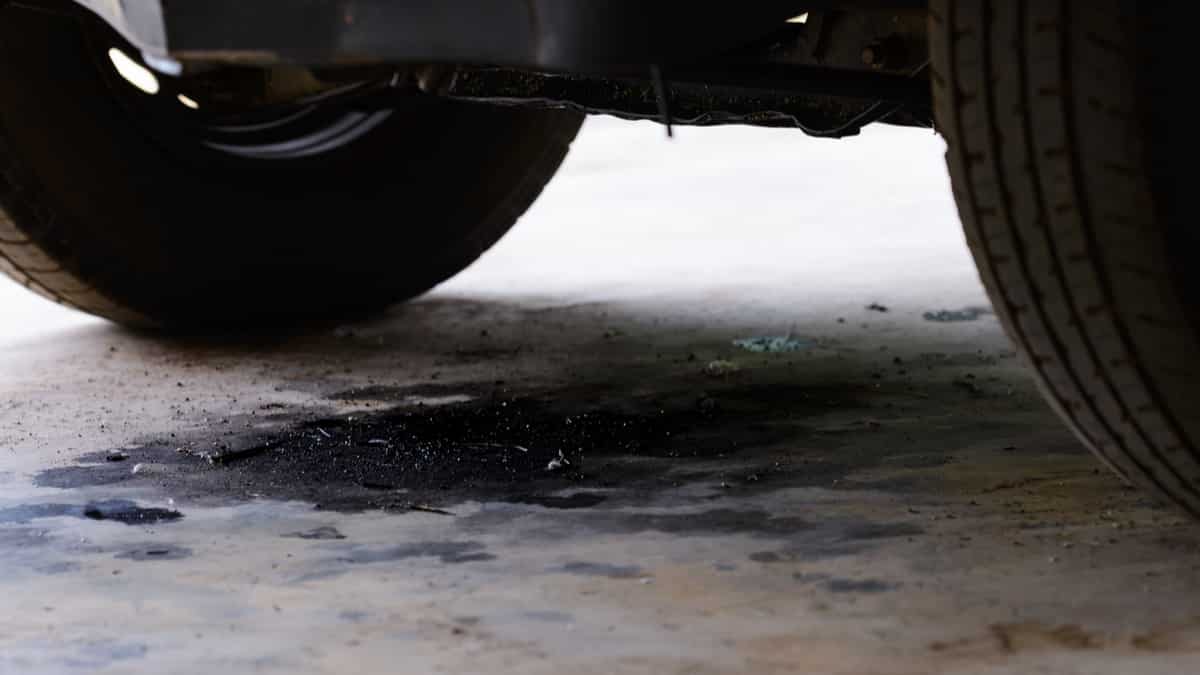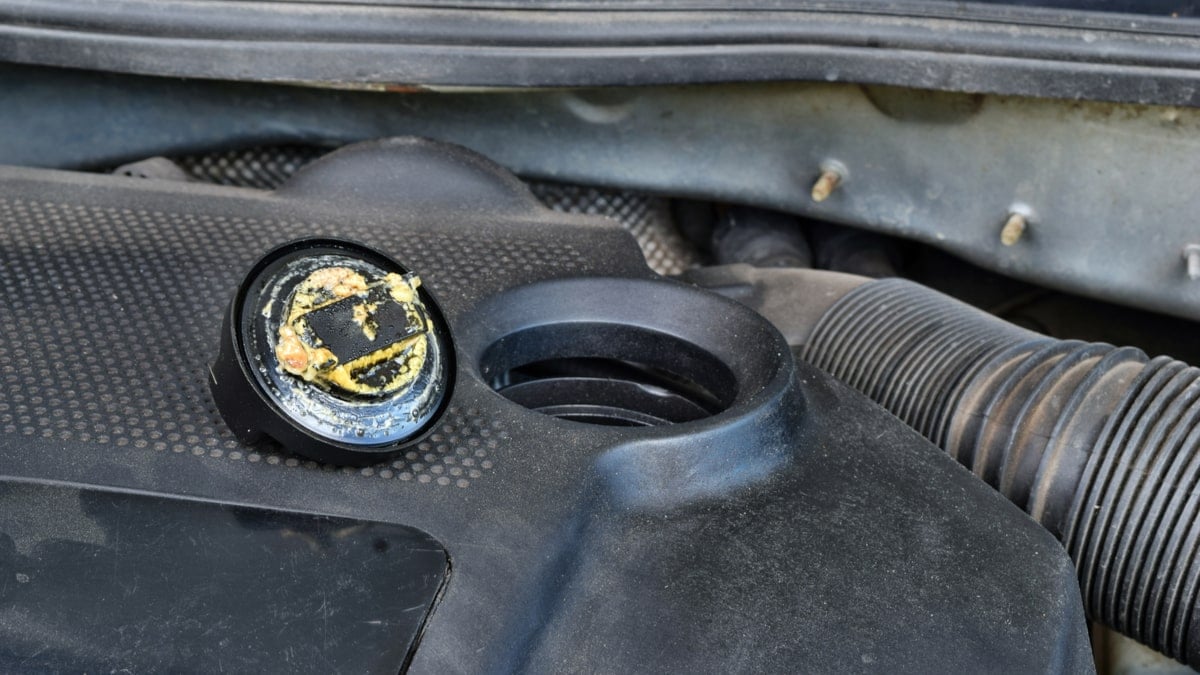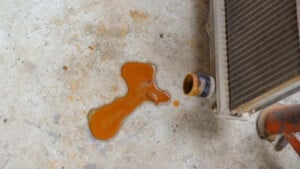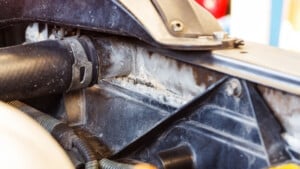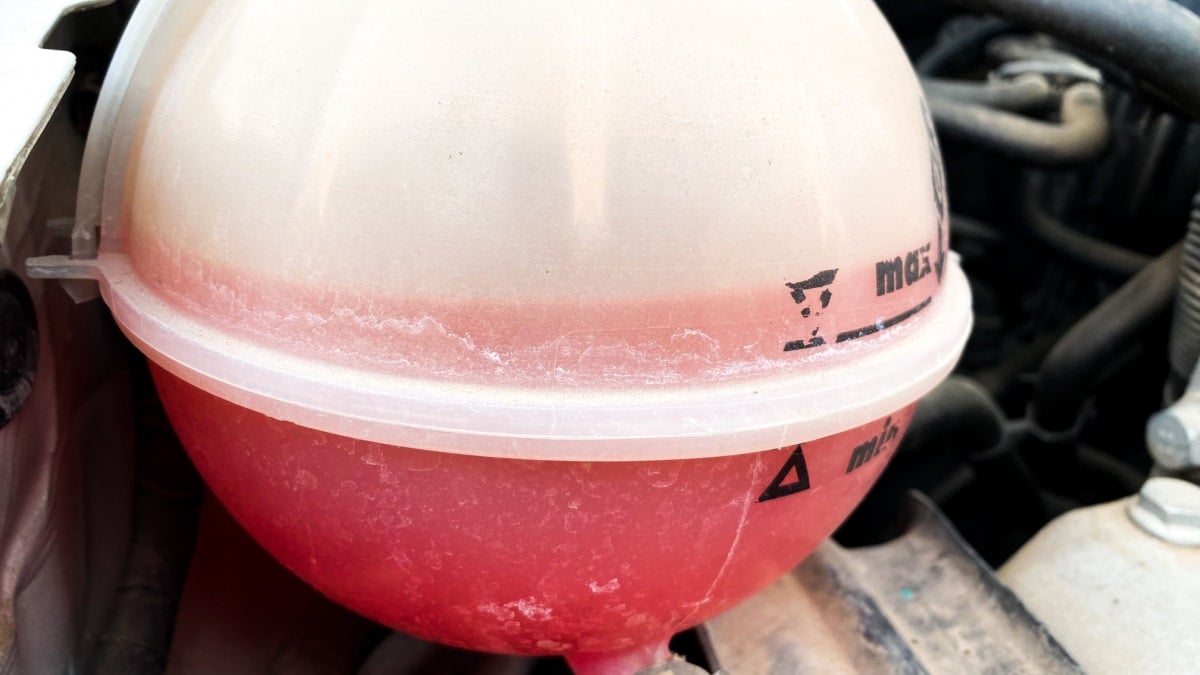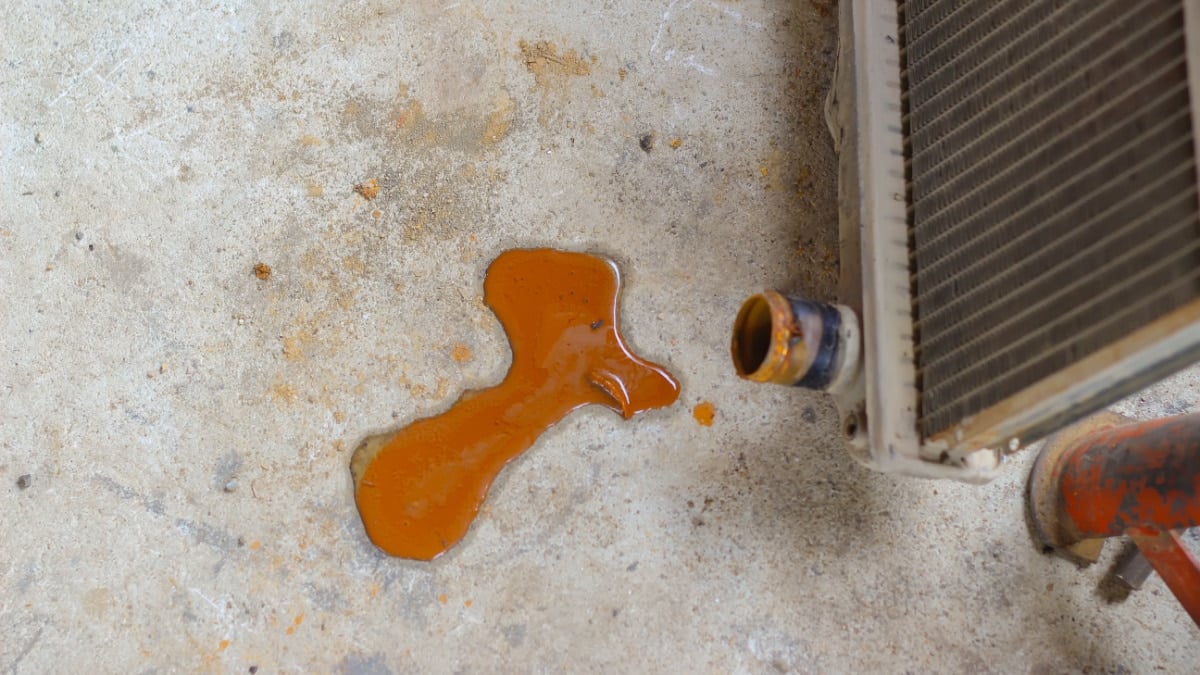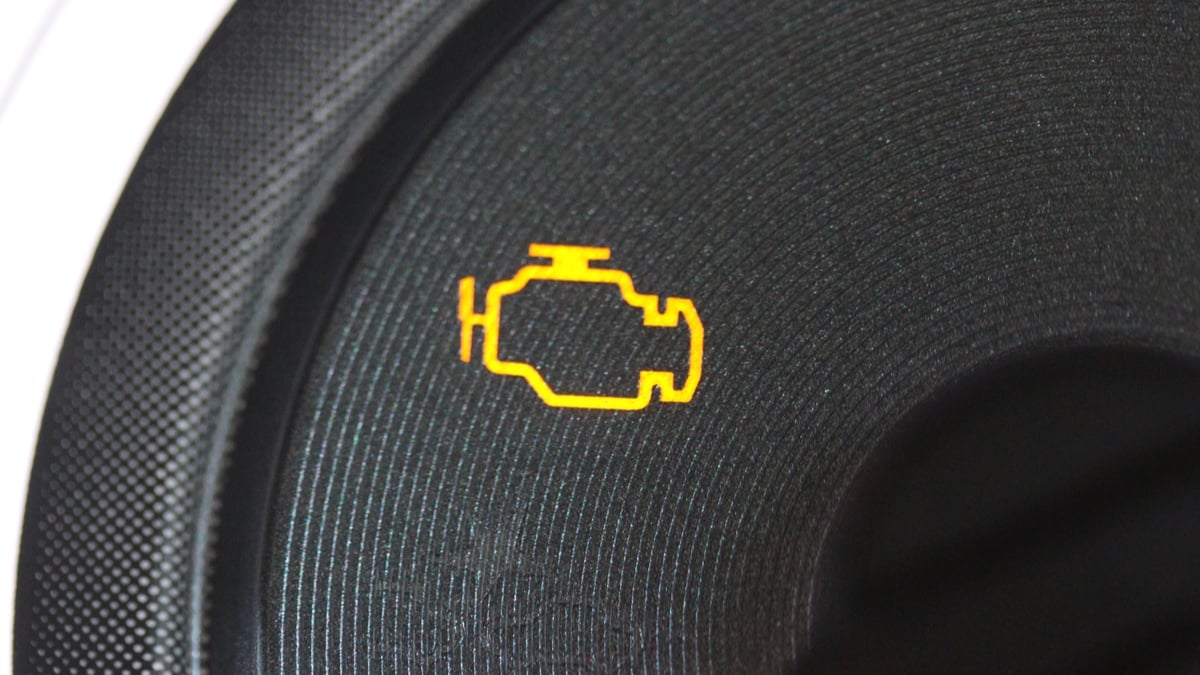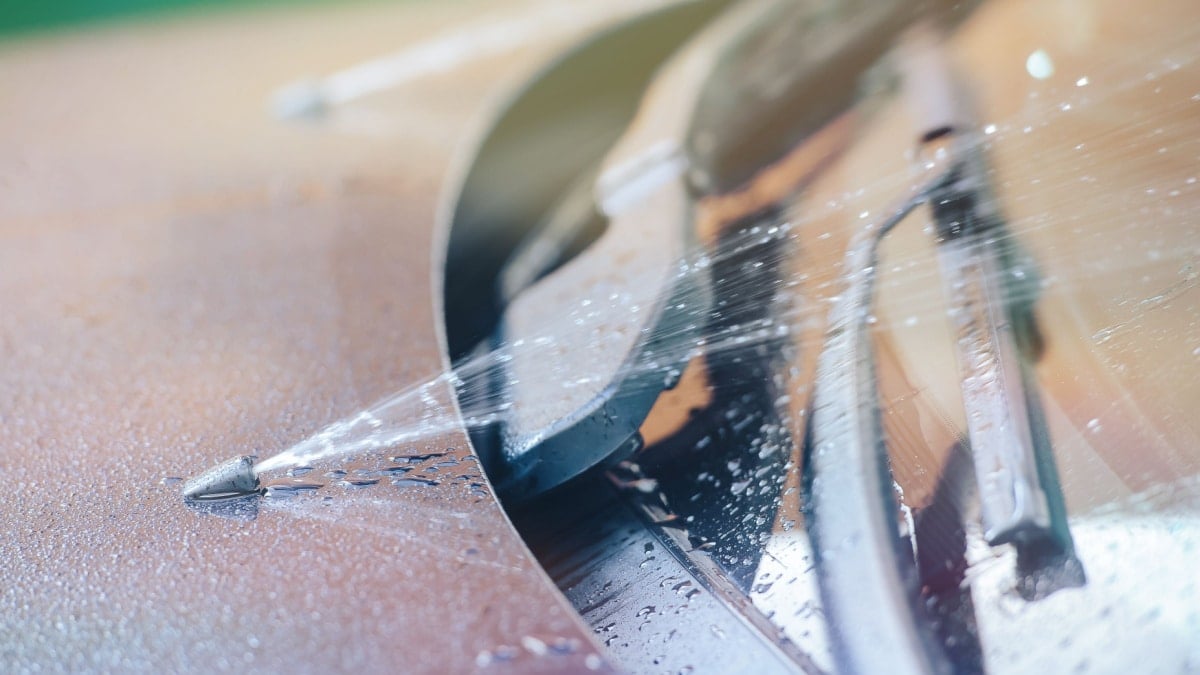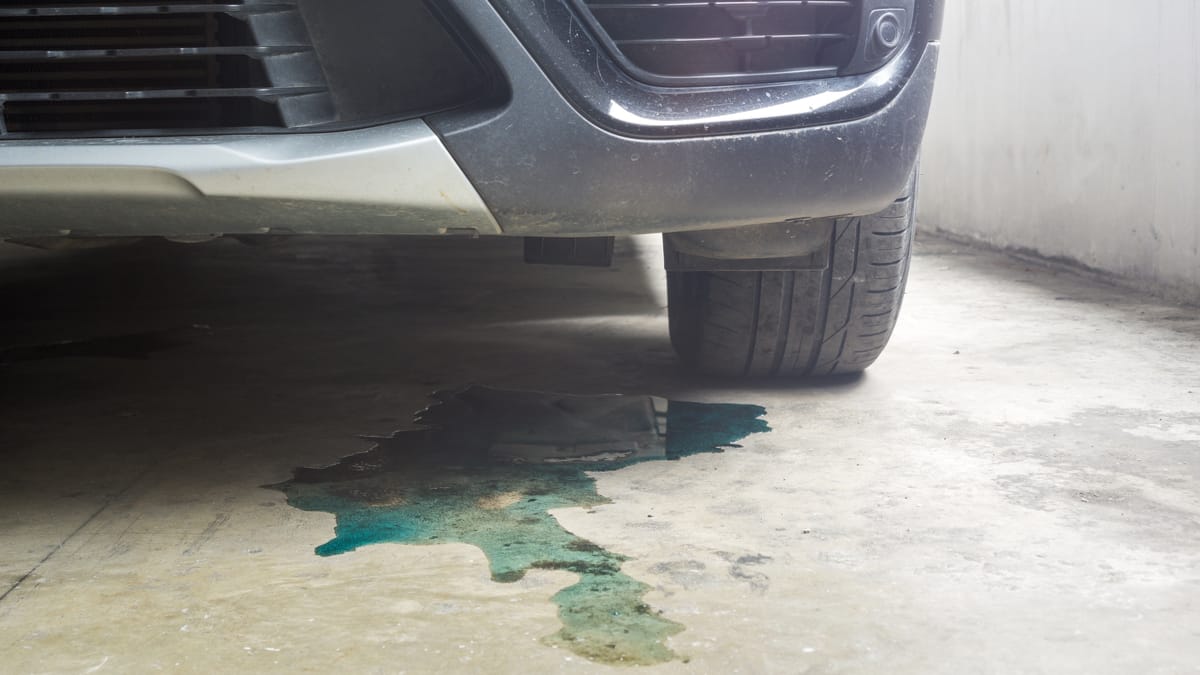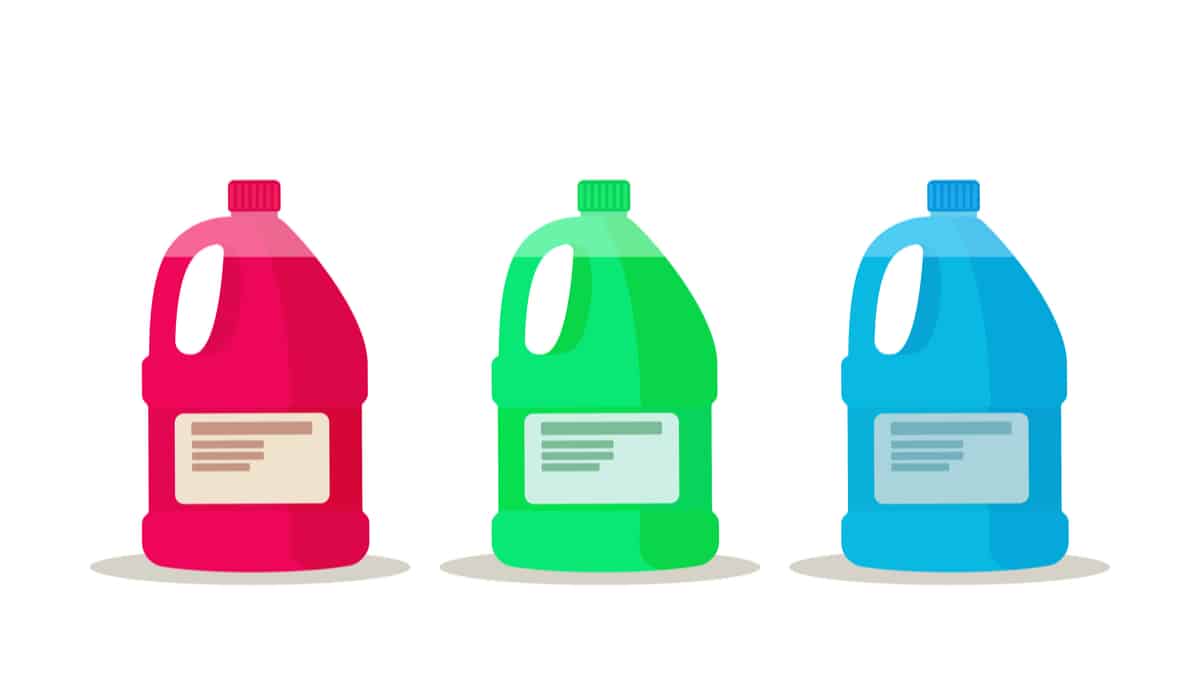By now, you probably know the differences between motor oil and coolant, so you are aware that they are completely different colors and don’t smell the same. When you pull the oil dipstick, you expect to see amber-colored fluid. So what happens when you see oil in the coolant reservoir? Knowing these two fluids aren’t supposed to mix should bring alarm.
In this guide, we show you why there’s oil and coolant mixing. We also outline ways to fix it and discuss whether you should use an oil stop leak additive. At the end of our guide, we give you some answers to a few questions you may have on your mind.
Causes of Oil In Coolant Reservoir
If you see oil in the coolant reservoir, there could be a blown head gasket. It could also be a bad oil/coolant heat exchanger or a crack in the cylinder head. There could be an engine block crack, a faulty transmission fluid cooler/heat exchanger or possibly oil got into the system by accident.
Let’s examine these options a little closer.
1. Blown Head Gasket
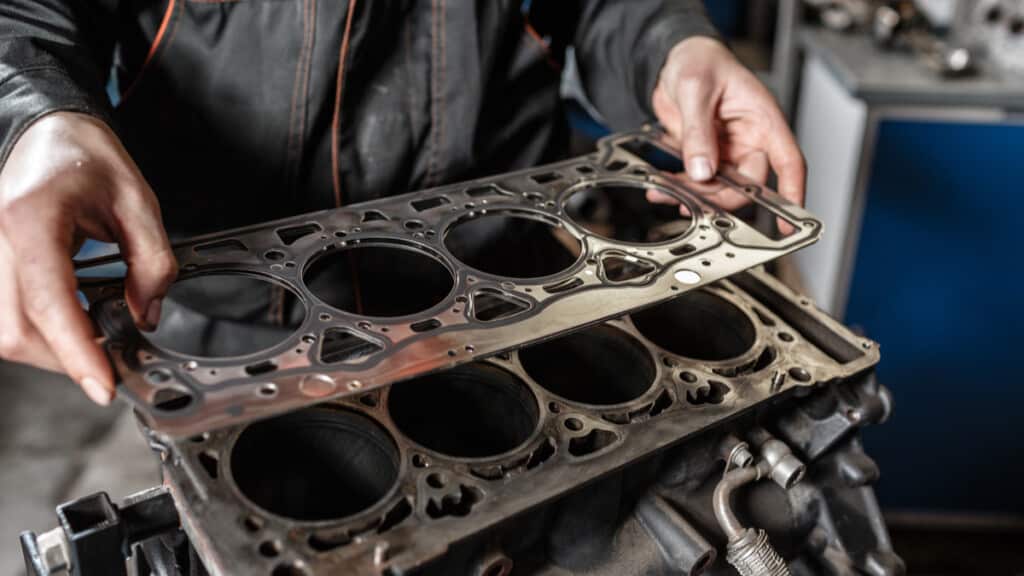
The head gasket is located between the engine block and cylinder head. It keeps the oil from mixing with the coolant. Yet, when it fails, oil is going to leak into the cooling system or vice versa. You may see brown sludge sitting in the coolant reservoir when this occurs.
If you don’t repair the head gasket immediately, the engine is going to start overheating. When neglected, it can lead to serious engine damage.
2. Faulty Oil/Coolant Heat Exchanger
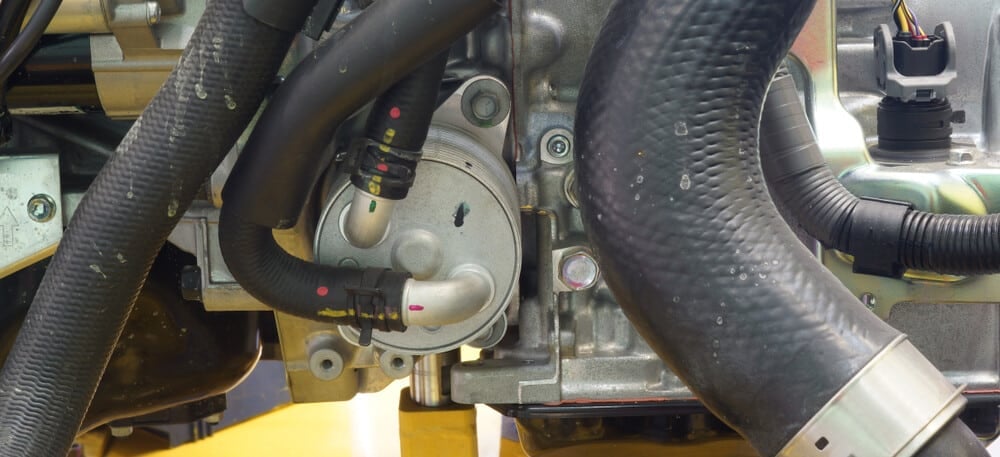
The oil/coolant heat exchanger is vital to keeping the temperature of the engine down. Advanced systems are often found in high-performance or race cars.
The purpose of the system is to cool down the oil to an acceptable level. However, when the cooler fails, motor oil can get into the cooling system.
3. Cylinder Head Cracks
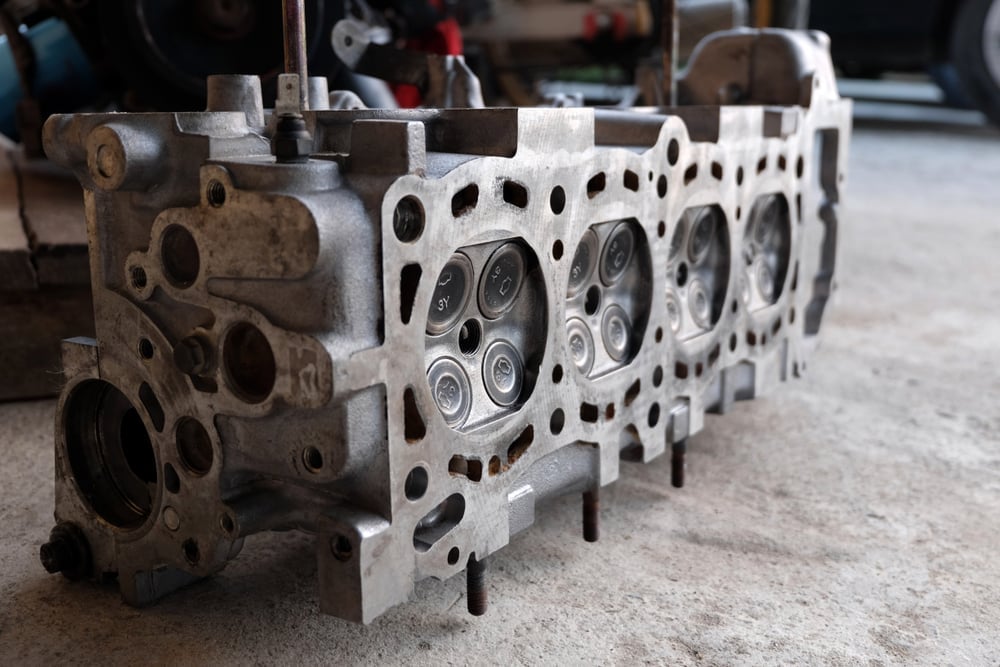
In most vehicles, the cylinder head sits above the cylinders, forming a roof over the combustion chamber. Yet, in overhead camshaft or overhead valve engines, the cylinder head contains exhaust and inlet passages, valves, spark plugs, coolant passages and fuel injectors. The straight engine has a single cylinder head that’s shared by the cylinders, while the V engines contain two cylinder heads, one for each cylinder bank.
Either way, if damage occurs to the cylinder head, it can allow oil to leak into the coolant. There’s no easy fix to repair this, often causing cars to end up in the junkyard if they are old with high mileage.
4. Engine Block Cracks
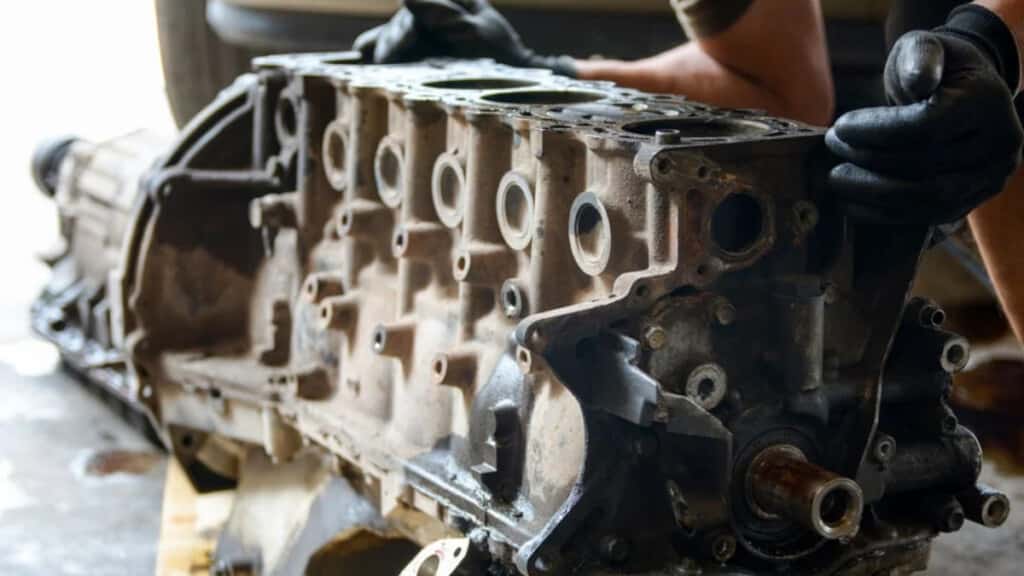
The same is true of the engine block. It’s not something you want to deal with but rarely occurs on low-mileage, newer cars.
Once the engine block cracks, you have no choice but to replace the motor. For this reason, most of these cars are going to be junked.
5. Faulty Transmission Fluid Cooler/Heat Exchanger
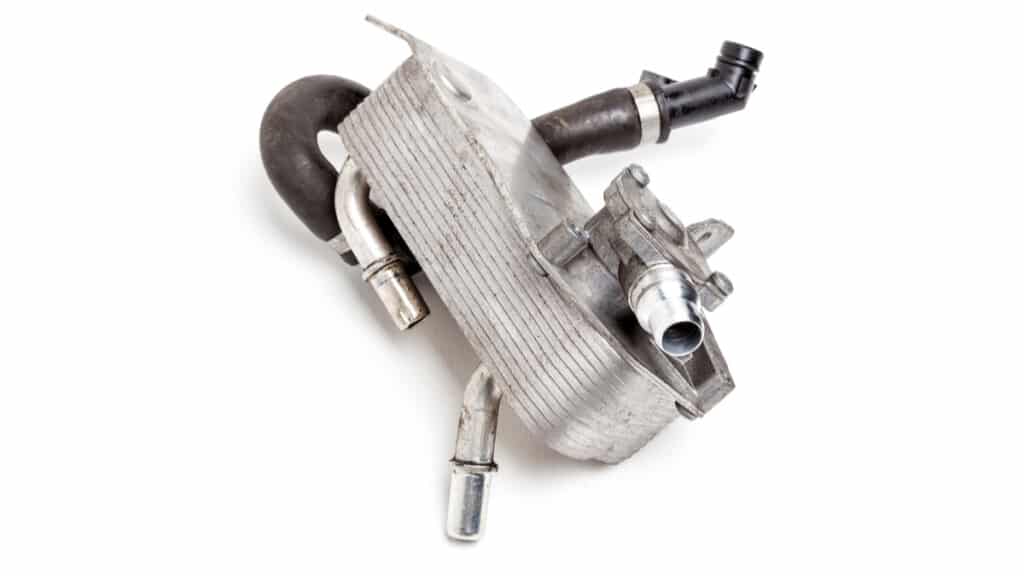
Are you positive that what you are looking at is oil? The transmission may also be equipped with a heat exchanger that uses coolant to keep the transmission temperature down, although this isn’t found in every car. If there’s a crack, transmission fluid can seep into the coolant.
It’s also possible for coolant to end up in the transmission fluid. Take a closer look to see what you are dealing with.
6. Oil Added There By Mistake
Sometimes, human error is to blame. As professional mechanics, this isn’t something we deal with personally, but it could easily happen if you are inexperienced.
When you top off fluids, you want to make sure you have the proper reservoir for what you are adding. There’s a filler location for the oil and one for the coolant. If you’ve mixed them up, the systems could become contaminated.
How To Fix Oil In Coolant Reservoir
If you feel adventurous, you can attempt to repair the problem yourself. In some cases, the fix isn’t that simple, so you would need a professional to help you. Let’s look at some ways to remedy this situation.
1. Pressure Test The Coolant System
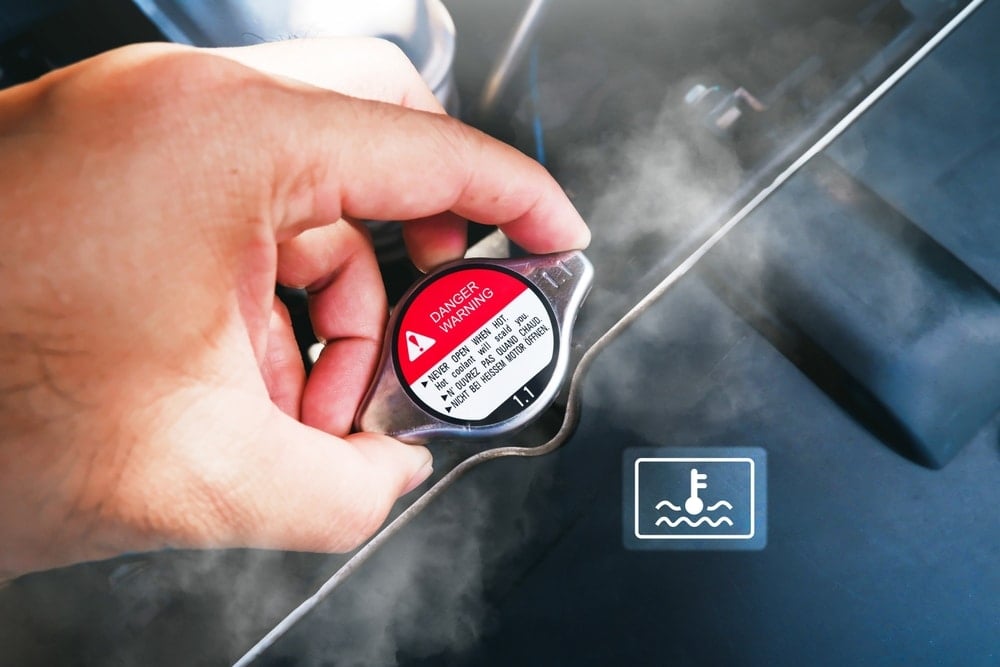
Your first step is to perform a pressure test. You need a cooling system pressure tester. Most people don’t own this, but it can be rented from the auto parts store. Once you have the tester, follow these steps.
- Attach the pressure tester to the radiator on the cap.
- Pump it by hand until the gauge pressure measures what’s written on the radiator cap. Usually, this is between 13 and 16 psi.
- Leave the vehicle to sit for thirty minutes.
- Inspect the cooling system for leaks and inspect the gauge for pressure changes.
- If you notice less pressure without an external leak, fluid is leaking internally.
It’s important to remember that you should never open the cooling system while the motor is hot, or you could be burned.
2. Inspect Where The Coolant Is Leaking From
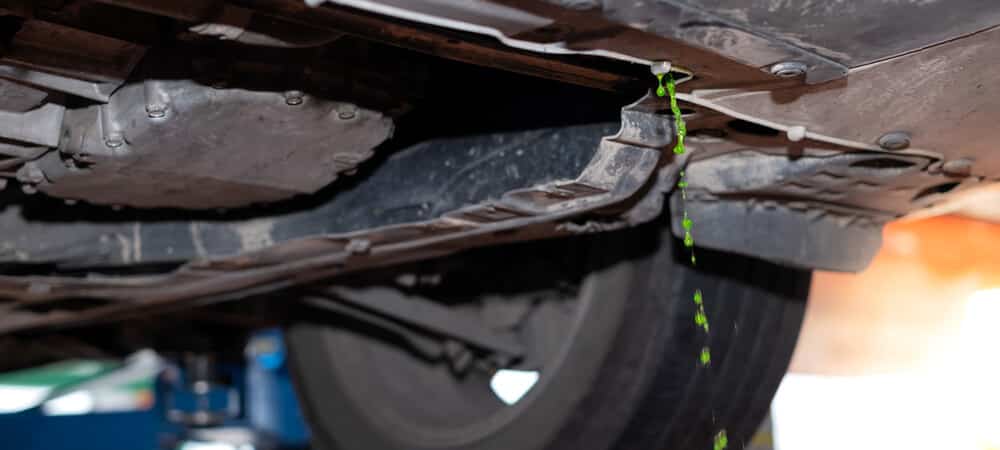
If there’s an external leak, you can hunt down the cause and repair it. However, there’s not typically a part that would break, leading to both an internal and external leak.
Internal leaks are much harder to find. In this case, the engine needs to be disassembled slightly to determine the cause. This is something most people aren’t equipped to do in a home garage.
3. Repair Or Replace The Faulty Part
If the head gasket is to blame, there’s a process for fixing it. Along with installing a new gasket, you would need to flush the cooling system to remove all of the oil. You may also consider inspecting the water pump and radiator for any signs of damage. With oil flowing through the system, they could have been damaged because it’s thicker than coolant.
If there’s another part to be replaced, now is the time to do it. Some people choose to install a used engine or rebuild it after a crack in the block if there’s still plenty of life left on the car.
Whatever repair you face, this is going to be costly. For example, the average head gasket replacement costs $1,600 to $2,000 because of how complicated it is to perform. If you need a rebuilt engine, you could spend anywhere from $2,000 to $6,000, depending on what type of vehicle you drive.
RELATED: How to Test A Blown Head Gasket In Your Car
4. Flush The System (After the issue is repaired)
If a coolant flush is needed, here are a few simple steps to follow.
- Allow the engine to cool down.
- Jack up the front of the vehicle.
- Clean off the radiator with a hose and some soapy water to ensure no dirt gets into the system.
- Inspect the radiator.
- Put a pan below the drainage valve to catch the old coolant.
- Open the drainage valve and let the coolant run out.
- Once the flow starts dripping, flush the radiator with water. Top off the radiator with clean water and replace the cap.
- Run the engine for 15 minutes.
- Wait for the engine to cool down again and repeat the steps to empty the water.
- Close the valve and fill up with coolant.
Do not pour the old coolant down the drain or on the ground. Recycle old fluids properly, either at a local drop-off or your auto parts store.
5. Contact A Professional
If any of these jobs seem too big for you, don’t be afraid to reach out to a mechanic. It’s better to have a professional put an eye on the problem than to make a mistake.
Because some of these fixes are expensive, you want to get a second opinion. After all, there’s no sense in sending your car to the junkyard if the problem is simpler than you thought.
Can An Oil Stop Leak Additive Fix The Issue?
Head gasket sealers are marketed as being able to plug up tiny holes to restore compression. In some cases, the additives work temporarily, possibly even providing you with several thousand more miles of travel. However, they can also cause more damage.
If you are planning to fix the car, do it sooner than later and avoid the additives. On the other hand, if you plan to get rid of the car and junk it, you can use the additive to buy yourself a little more time.
RELATED: Head Gasket Sealer – Does It Work? Pros and Cons
Does oil in coolant always mean a blown head gasket?
No, while the blown head gasket is the most common cause, it’s not the only one. It’s also possible that there’s a cracked cylinder head or engine block. Otherwise, the heat exchanger may have become damaged or you could have inadvertently added oil to the cooling system by mistake.
How do I get rid of oil in my coolant system?
First, you need to repair the problem. If there’s a blown head gasket, it needs to be fixed. Once that’s done, you want to flush the cooling system to ensure there’s no oil left behind. After that, you can top the system off and get your car out on the road.
Why is there oil in my coolant but no coolant in my oil?
With a blown head gasket, the coolant won’t always get into the oil, but oil usually ends up contaminating the coolant. The longer the problem is left unresolved, the worse it’s going to get. If left unchecked, you could end up with coolant in the oil as well.
Can a bad radiator cause the oil in the coolant reservoir?
No, there shouldn’t be oil in the coolant reservoir because of a failing radiator. Normally, this condition is caused by a blown head gasket. However, it can also happen if the exchanger fails, the cylinder head cracks or there’s damage to the engine block, all of which are complicated repairs.
What happens if you drive with coolant in the oil?
If the coolant can’t reduce the temperature of the engine, the motor could overheat. Additionally, as the engine oil continues to leak, it will get lower, leaving the motor without the lubrication it needs. Either way, you are looking at an engine replacement if you continue driving this way.
Once the oil is in the coolant reservoir, it’s time to act. Don’t continue to drive with coolant and oil mixing, as it can lead to permanent engine failure. The longer you let this problem go, the more damage you could deal with. You could also end up breaking down on the side of the road when the engine overheats.
Have a professional inspect the system and perform a pressure test if you aren’t sure how to do it yourself. Sometimes, it is best to trust a mechanic than to attempt repairs you aren’t familiar with.
Categories: Coolant, Troubleshooting
